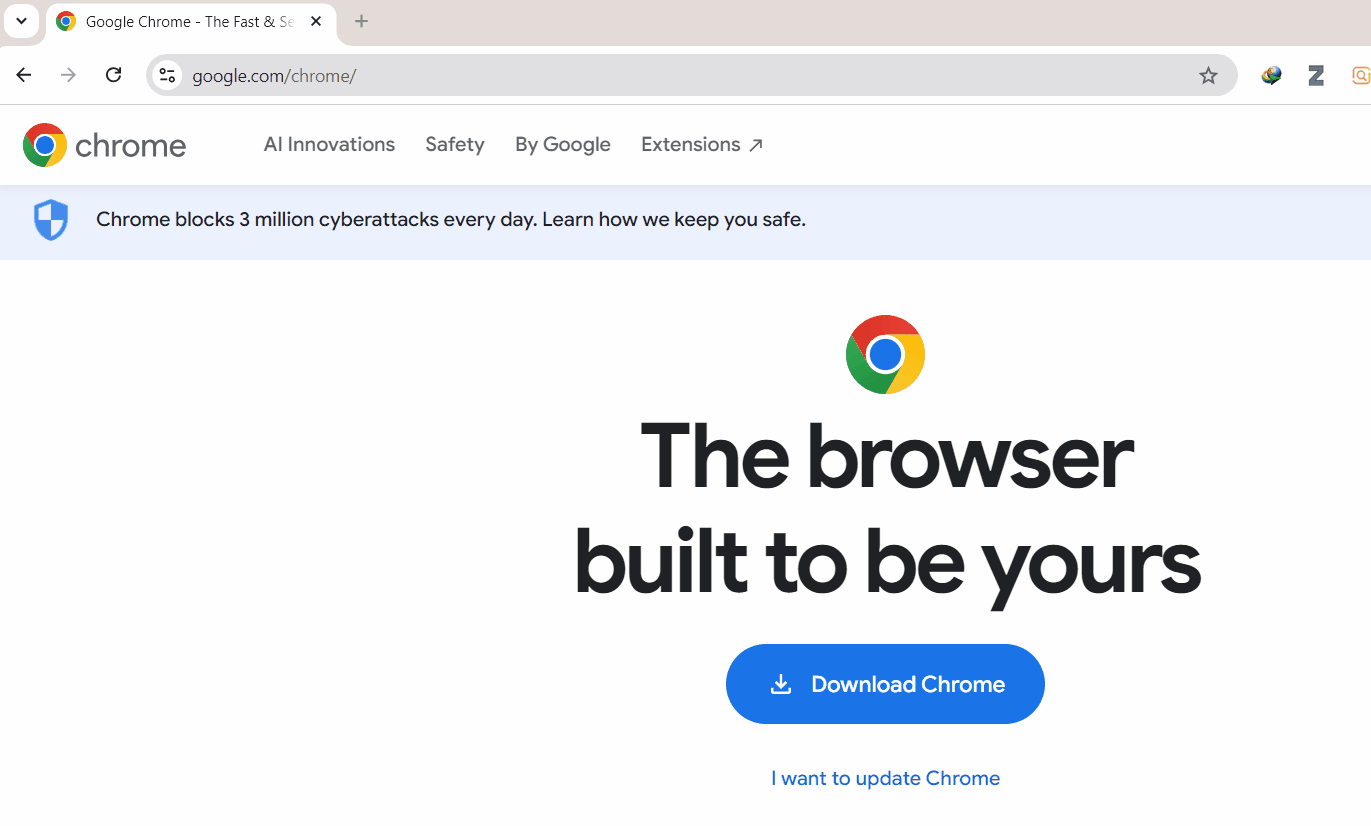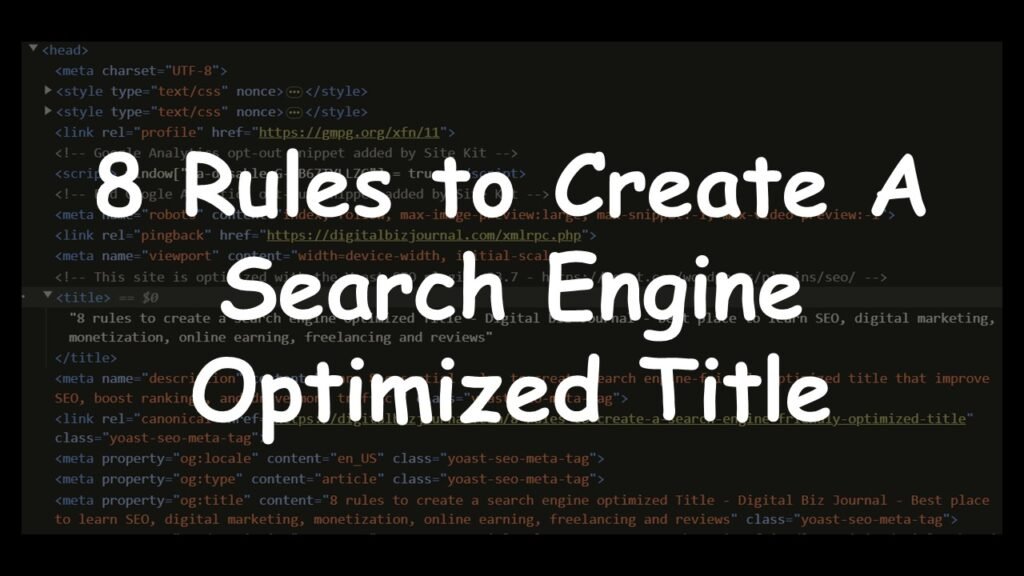Why is it important to have search engine optimized titles?
When we create a web page, we provide a title which is the most important part of any page. Because Google uses it to rank and show in its search results. If we can optimize the title to improve the SEO of a page, we can expect that our page’s visibility will increase. Here, we have discussed 8 rules that you can follow to create a search engine optimized Title. This title usually resides in the <title></title> tag of HTML.
What is a Title Tag?
The title tag is the title that is shown in the web browser’s top bar.

We can also check the <title> tag by right-clicking on the web page in a Chrome browser and then clicking Inspect. It will now show the HTML code of this page. From here, if we scroll down and expand the <head> tag, we can find the <title> tag here. The text inside this <title> tag will be shown in the browser’s top bar. It is shown in the following figure about how we can find the <title> tag inside HTML code.

<Title> tag is the most important part for a webpage to be found by Google. If you set the title tag well, and if anyone searches the content of your <title> tag, Google will show your page in its search results. But if the competition is very high, which means that there are thousands of pages having the same words in their <title> tag, then you have to apply other SEO techniques as well to rank in Google search results.
The text inside the <title> tag is also shown in the search result after the domain name.

CTR of SEO-Friendly Title
If the web page title inside the <title></title> tag is optimized, your page’s CTR (Click-Through Rate) will also increase. It is the measure of your page’s performance. It is calculated as follows:

So, if your title is good and attracts a visitor, he/she will click the ad for your page and will enter your website. Thus, a good title is always important in attracting a visitor and also to rank higher in Google search results.
8 Rules to Follow while Optimizing Title
The 8 rules that we can follow to create search engine-friendly optimized title are described below:
- Optimize Title length to improve SEO
- Optimize Pixel Length of SEO-Friendly Title
- Style to follow for Optimizing Title for SEO
- Use Separators for Optimizing Title
- Use Primary Keywords in the Title
- Use Number in Title to Optimize
- Power Words in Title
- Titles Should Be Unique In Your Website
1. Optimize Title length to improve SEO
We cannot just create any title. For example, we cannot put a title of 1000 characters. To create a search engine-friendly optimized title, we have to remember certain rules. Among these rules, title length is an important factor. The ideal length of the title of any web page should be between 50 and 60 characters. It is to ensure that your title is fully shown on desktop or mobile browsers. If your title is too long, the last extra characters will not be shown in the search engine results. The last extra characters will be replaced by ellipses (…) as shown in the figure.

So, you should choose the words of your title wisely and with keyword research so that it can fit within 50 to 60 characters. We can use the website https://wordcounter.net/ to check the length of our title. We have to just copy and paste our title in this website and it will show the number of words and characters in our title.

2. Optimize Pixel Length of SEO-Friendly Title
We can also calculate the pixel length of the title to check whether it will fit within the boundary in a display type. Normally, it should be within 460 to 480 pixels. To measure the pixel length, we can use the website: https://www.climbmarketing.com/title-tag-pixel-width-checker/. From this website, we can check the pixel length. If we put the same line “A cardiologist shares the 4 worst foods for high cholesterol—and what she eats to keep her ‘heart healthy’” in mixed case and upper case in this website, we can see that the UPPER CASE version takes more pixels.

So, from this figure, we can see that the UPPERCASE version of the same title takes 224 pixels more. So, we should be careful when selecting the case also to optimize the title’s pixel length.
3. Style to follow for Optimizing Title for SEO
We have seen that the capitalized or UPPERCASE title takes more space. So, we can use the Pascal Case style where the first character of each word is capitalized. But we can keep the prepositions to the lowercase characters. In this way, our Title will take up less space in different resolutions of displays.
4. Use Separators for Optimizing Title
We can use different separators to optimize our title. These separators can be – (hyphen or dash) and | (vertical line or pipe). For example,
- Optimize Title for SEO | Digital Biz Journal
- Optimize Title – Best Strategies to Follow
Thus, we can make the title more attractive and join different phrases or sentences together with separators.
5. Use Primary Keywords in the Title
This is very important while optimizing the title of a page. We should try to use the maximum number of primary keywords in our title. So, our page will be ranked by Google for these keywords. And always try to place the keywords in the beginning of the title.
6. Use Number in Title to Optimize
We can use numbers in our title so that it will be more SEO-friendly. For example, we can use the numbers in the following ways:
- Title tag optimization in 2024
- Top 5 rules to optimize tags for SEO
7. Power Words in Title
Power words attract visitors. So, try to use power words in your title. Power words include New, Because, Latest, Free, Awesome, Best, Step by Step, Exclusive, etc. There are 100s of power words. We can search Google and use the best power word for our title.
8. Titles Should Be Unique In Your Website
The title of each page of your website should be unique. No page titles should overlap with each other. The primary keywords of each page should not overlap.
So, if you follow these 8 rules to improve your title for optimizing it for SEO, then Google will rank it higher in its search results. As a result, your page’s visibility will gradually increase and attract more visitors.

